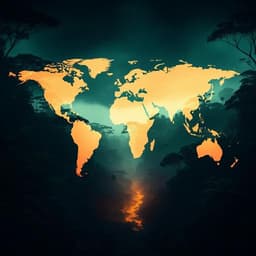
Environmental Studies and Forestry
Black carbon footprint of human presence in Antarctica
R. R. Cordero, E. Sepúlveda, et al.
This groundbreaking research conducted by Raúl R. Cordero and his team reveals alarming increases in black carbon concentrations in Antarctic snow, dramatically accelerating snowmelt and threatening the delicate ecosystem. The findings highlight the significant environmental impact of human activities on the continent.
Playback language: English
Related Publications
Explore these studies to deepen your understanding of the subject.







